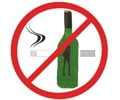Drivers who talk on mobile phones when behind the wheel clog traffic, drive slower on the freeway, pass sluggish vehicles less often and take longer to complete their trips, according to a new study.
The study, led by Dave Strayer, a professor at the University of Utah psychology, demonstrated how subjects talked on a cell phone while operating a driving simulator.“At the end of the day, the average person’s commute is longer because of that person who is on the cell phone right in front of them. That SOB on the cell phone is slowing you down and making you late,” said Strayer.
Joel Cooper, a University of Utah doctoral student in psychology and the study’s co-author said: “If you talk on the phone while you’re driving, it’s going to take you longer to get from point A to point B, and it’s going to slow down everybody else on the road.
Peter Martin, an associate professor of civil and environmental engineering and director of the University of Utah Traffic Lab and co-author said that the study shows “cell phones not only make driving dangerous, they cause delay too.”
In the study, the researchers used a PatrolSim driving simulator. A person sits in a front seat equipped with gas pedal, brakes, steering and displays from a Ford Crown Victoria patrol car. Realistic traffic scenes are projected on three screens around the driver.
The study involved 36 volunteers. Each participant drove through six, 9.2-mile-long freeway scenarios, two each in low, medium and high-density traffic, corresponding to freeway speeds of 70 mph to 40 mph.
Advertisement
The drivers were told to obey the 65-mph speed limit, and use turn signals. That let participants decide their own speeds, following distances and lane changes.
Advertisement
In low, medium and high traffic density, cell phone users spent 31 percent, 16 percent and 12 percent, respectively, more time following within 200 feet of a slow lead vehicle than undistracted drivers. That meant they spent 25 to 50 more seconds following another vehicle during the 9.2-mile drive.
“We designed the study so that traffic would periodically slow in one lane and the other lane would periodically free up. It created a situation where progress down the road was clearly impeded by slower moving vehicles, and a driver would benefit by moving to the faster lane, whether it was right or left,” Cooper said.
Compared with undistracted motorists, drivers on cell phones drove an average of 2 mph slower and took 15 to 19 seconds longer to complete the 9.2 miles. That may not seem like much, but is likely to be compounded if 10 percent of all drivers are talking on wireless phones at the same time, Cooper said.
The researchers said: “Results indicated that, when drivers conversed on a cell phone, they made fewer lane changes, had a lower overall mean speed and a significant increase in travel time in the medium and high density driving conditions.”
The study will be presented on Jan. 16 during the Transportation Research Board’s annual meeting.
Source-ANI
LIN/M








